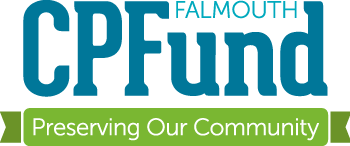Coastal Ponds Management Plans
Location: Green Pond, West Falmouth Harbor, Eel River, and Bournes Pond
Applicant: Department of Natural Resources
Allocation: $50,000, $25,000, and $25,000
Year/Article: November 2006, A35; April 2007, A42; November 2008, A31
In 2006, the Coastal Ponds Management Committee in partnership with the Department of Natural Resources requested and received $50,000 from the CPFund to perform a shellfish and benthic habitat study and create a management plan for Green Pond in East Falmouth. The plan was completed in the fall of 2008 and used as a model for subsequent studies in West Falmouth Harbor (supported in 2007 with $25,000 in CP funds), and Eel River and Bournes Pond (supported in 2008 with $25,000 in CP Funds).
West Falmouth Harbor is one of only a few coastal ponds in Falmouth that still possessed significant eelgrass beds, but they were diminishing and threatened. It supports active oyster and quahog fisheries and is virtually the only body of water left where scallops can be harvested in any number. These are in decline, however. According to water quality data from Pond Watchers of the Buzzards Bay Coalition, Eel River has the most highly altered environment from input from septic systems and other land-based development. Bournes Pond is one of the least affected coastal ponds on Falmouth’s south shore. Both Eel River and Bournes Pond support recreational and commercial shell fishing, but both ponds suffer shellfish mortality from low oxygen events.
The purpose of the studies was to develop integrated management plans by early 2009 for all five Falmouth coastal ponds: Great Pond (180 acres), Bournes Pond (152 acres), Eel River, Green Pond (128 acres), and West Falmouth Harbor.
The complex of Falmouth coastal ponds, harbors, marshes and beaches are critical components of the Town’s unique natural and cultural heritage. They provide habitat for wildlife and other natural resources, natural resource protection, scenic vistas, and an economic resource and tax base for the Town as well as open space and recreational opportunities on, in, and under the water. There are thirty fish and shellfish species harvested commercially that spend part of their lives in or visit Falmouth coastal ponds, including eel, flounder, trout, herring, bluefish, striped bass, scallops, clams, blue crabs, mussels, and oyster. Both commercial and recreational fishers harvest resources from these water bodies. Falmouth has sixty-eight miles of coastline, the longest in the state. But in 2006 these important Falmouth bodies of water lacked the protection of an integrated management strategy.
To produce such plans, professionals assessed various Town sanctioned marine-related activities (boating, mooring, docks, swimming, shellfish fishing) as well as the quality of the water, nitrogen loading, vegetation, and wildlife trends. They then planned to develop management strategies that balanced the restoration and preservation of natural resources and water quality with public uses of the ponds and adjacent coastlines. Developing such management plans would not only guide decision-making in regard to Falmouth estuaries but also help avoid the costly remediation efforts that would be necessary without effective ponds management.
The Green Pond Study, completed in 2009, is available from the Falmouth Department of Natural Resources. The other studies were also completed, but to date (2016) management plans have not been developed for these bodies of water. Falmouth thus still lacks integrated management plans for improving and protecting these critical resources.



